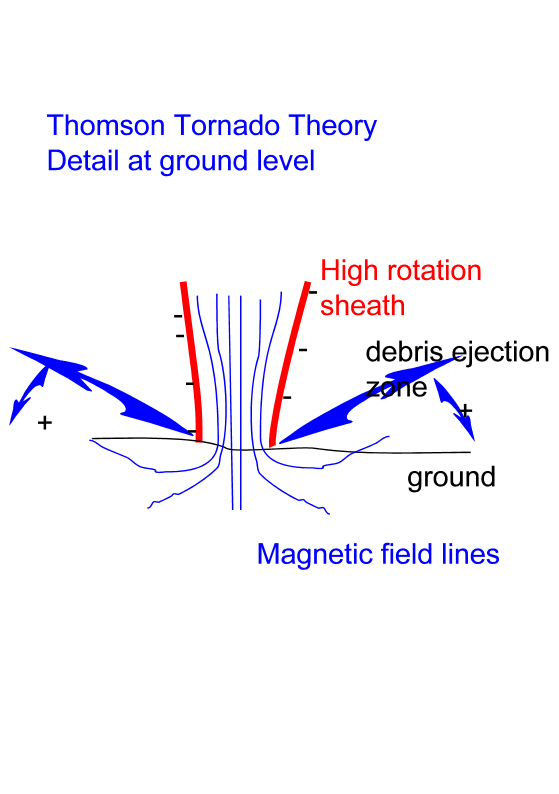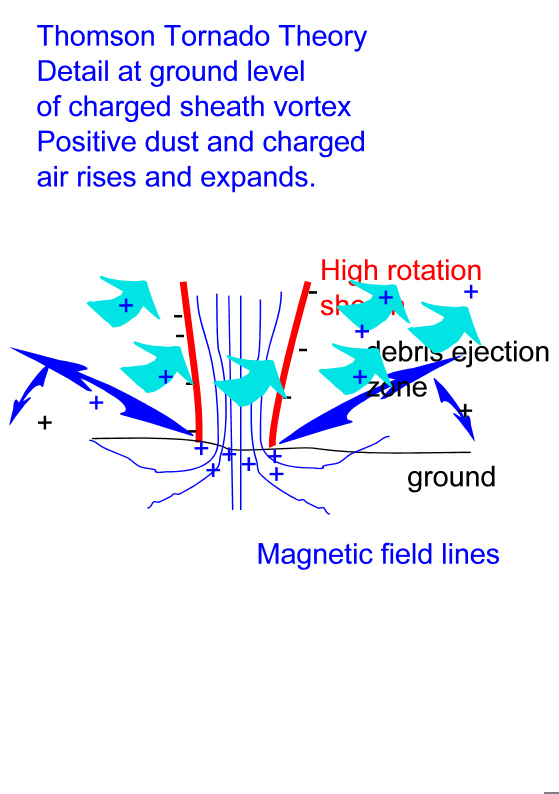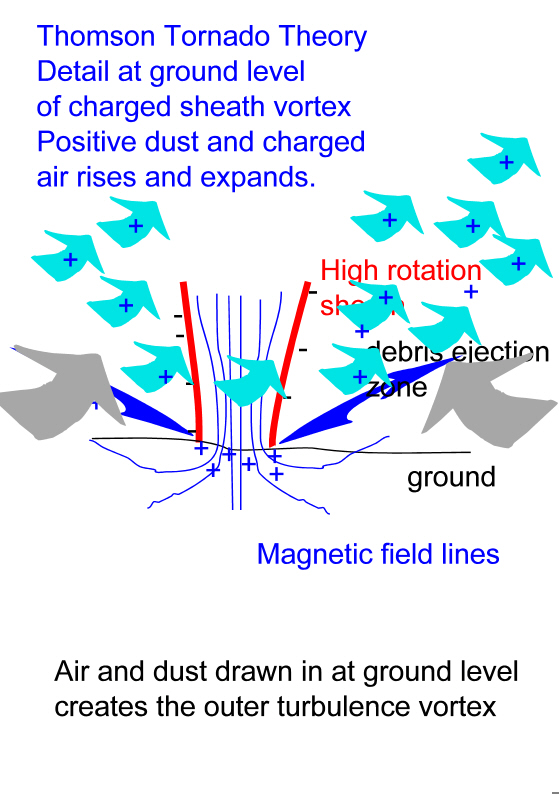How a Charge Sheath Vortex Explains the Observations
How useful is this
Large dust and debris clouds often obscure the processes
at work at the ground.
But small tornadoes allow a better view of the processes.
If you have examined the video clips of tornadoes on the previous page,
you will have seen that the tornado tube forms in a rotating storm cloud,
and descends to the ground.
Although rotating at high velocity, there is no outflow of air.
Debris and air is picked up at the base of the rotating core and accelerates
rapidly upwards and outwards.
This airflow appears to expand rapidly, with moisture condensing outside
the central core.
 It appears as though the central core has a high electrical charge
that induces the opposite charge onto everything near it. The attractive
forces are huge and together with the abrasion of particles rotating
in the sheath it rips the surface from anything it touches. As these
ripped off particles start to speed up the particles that were violently
attracted are now violently ejected.
It appears as though the central core has a high electrical charge
that induces the opposite charge onto everything near it. The attractive
forces are huge and together with the abrasion of particles rotating
in the sheath it rips the surface from anything it touches. As these
ripped off particles start to speed up the particles that were violently
attracted are now violently ejected.

The rising cloud of ejected material accelerates and expands as it does so.
This would suggest that this rising airflow is also now highly charged, but
not attracted to the ground or the central core.
See the movie from http://redrock.ncsa.uiuc.edu/~jewett/Obs/May1598.html
This is Overview
This is a good sequence starting with charged sheath vortex touching
down, clearly visible as a thin tube. An ejection cloud starts to build
up and an outer turbulence vortex starts to form, but is then blown away
- ahead of the vortex - by the surface wind. The outer turbulence vortex
then reforms, and by the time it crosses the road is extremely well
defined. At around 16 seconds part of the turbulence vortex is again
breaking up in a large curl, again blown out by a wind moving faster than
the vortex is travelling
Ejection Zone
If you watch a small tornado closely you can see these
forces at work. Watch how the opposite charged dust from the ground is
thrown out at high speed and then seems to drift downward again. This
shows very clearly that at this stage there is almost no airflow coming
down the tornado or going up the tornado. See the movie from http://www.uni-stuttgart.de/Wetter/specials/movies/tornado2.mpg
Look at the time between 00.03 to 00.06 A small tubular charged sheath
vortex is visible inside the larger turbulence vortex.

Charge Particle Expansion creates a Turbulence Vortex
As the ejected charged dust cloud increases, the charge between the dust and the charged air molecules create a pressure that forces the particles apart and reduces the density. This charge induced reduction in density makes the ejection cloud lighter than the surrounding air so it starts to rise.
As this dust cloud rises it draws air in from round the base of the tornado,
and this rising air may also start to rotate, but at a much slower rate
than the charged sheath vortex spinning at high speed inside it.
So what physical phenomenon can bring about this pattern of charge? See the next page.
Copyright Peter Thomson 2012-March-16
